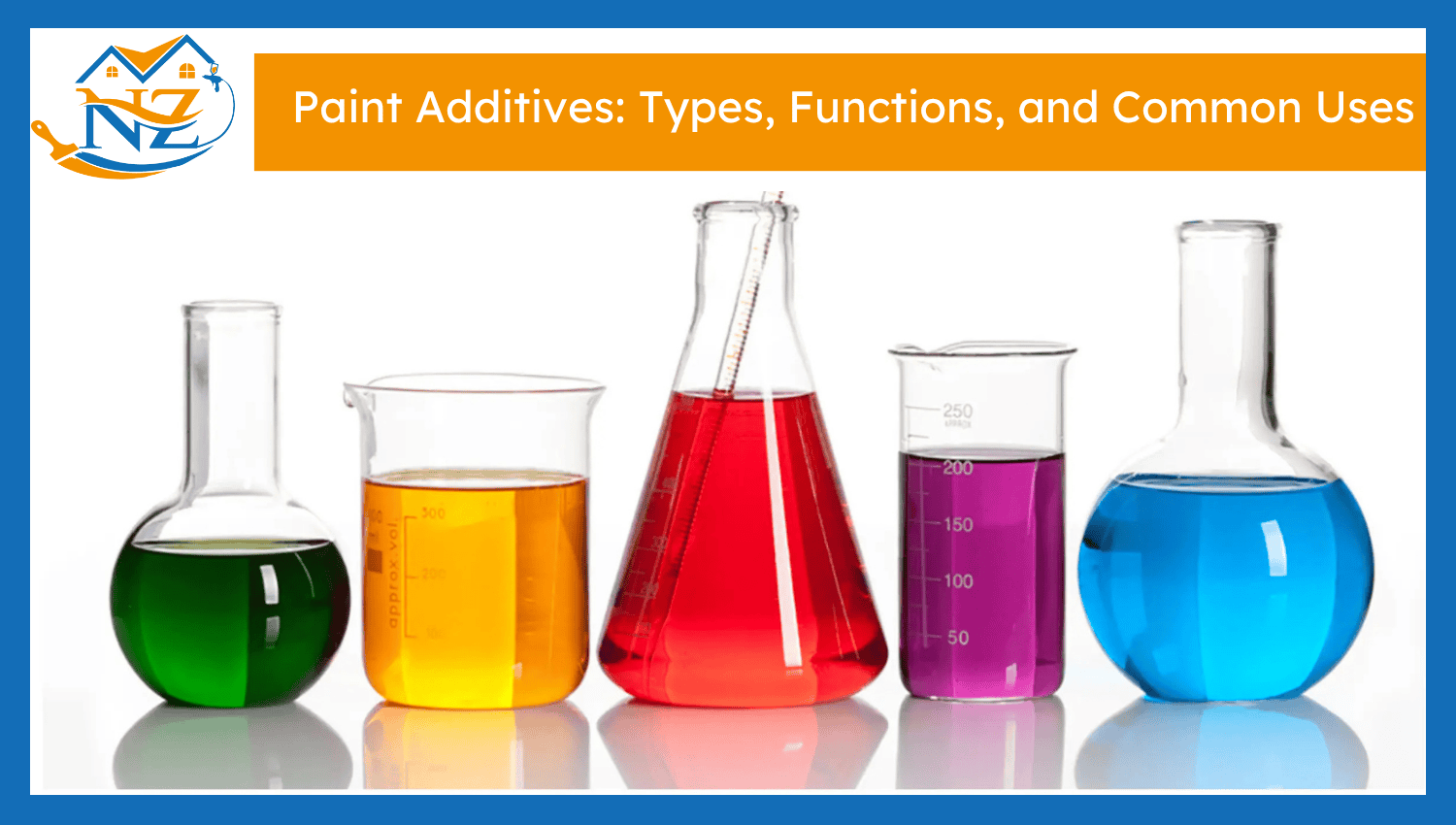

Paint additives are the specialized chemicals added to enhance the paint’s performance. Unlike pigments or binders, additives are not core components of paint formulations. They are added to improve the leveling, flow, drying time, and watery consistency of paints. Paint additives solve common paint problems such as non-adhesion, fading, rusting, bubbling, and frequent paint peeling.
Here are the 12 common types of paint additives:
Rheology Modifiers: Rheology modifiers, also known as thickeners, adjust the paint consistency and prevent sagging. These flow controlling agents include organic (carbohydrate polymers, synthetic polymers), inorganic (clay, silica), and associative (HEUR) thickeners, based on their mechanism of action. Unlike associative modifiers that interact with paint binders, other thickeners undergo hydrogen bonding, electrostatic interactions, and bridging to change viscosity.
Dispersing Agents: Dispersing agents evenly distribute the paint pigments and fillers to prevent clumps. They bind with pigment particles and create electrostatic or steric repulsions to break their aggregates. They also reduce the paint flooding, floating, and settling. Dispersing agents have polymer (polyacrylates, PVA), surfactant (phosphate esters), and inorganic (ammonium citrate, sodium citrate) types based on their interactions.
Wetting Agents: Wetting agents minimize the tendency of liquid molecules to cling together. It improves paint adhesion on glossy surfaces with its hydrophobic tail and hydrophilic heads. Wetting additives include ionic( sulfonates, phosphate esters) and non-ionic (polysiloxanes, ethoxylates) surfactants.
Anti-Foaming Agents: Anti-foaming additives reduce the formation of air bubbles in paint during the mixing and application process. These insoluble agents move freely in paint formulations to concentrate the bubbles and pinholes. It also disrupts the Marangoni effect, which stimulates foam production. Mix PDMS, fatty acid ester, sunflower, and cottonseed oil to achieve a fine film.
Biocides (Preservatives): Biocide agents prevent microbial growth (fungi, algae, bacteria) to increase the shelf life of paints. Add dry-film preservatives (organic and inorganic zinc compounds) to prevent paint degradation after application. Use in-can preservatives (isothiazolinones) to protect the can paint from mildew growth.
UV Stabilizers: UV stabilizers protect the paint from fading, discoloration, and cracking after being exposed to UV radiation. Hindered amine light neutralizes and scavenges free radicals to extend the lifespan of paint. Some additives, like benzotriazoles, absorb these ultraviolet radiations and convert them to harmless forms of energy.
Anti-Settling Agents: Anti-setting agents don’t allow the solid particles and paint pigments to set at the base of the can. It minimizes the hassle of stirring before use. Anti-settling additives such as organic clay, polyamide, and fumed silica form a physical network to prevent sinking.
Freeze-Thaw Stabilizers: Freeze-thaw stabilizers protect the water-based paints from frequent expansion, separation, and clumping when stored in colder environments. Use glycols, urea, surfactants, emulsifiers, or antifreeze additives to preserve the original consistency and texture of paint.
Anti-skinning agents: Anti-skinning additives prevent the formation of a thick, dry film over the surface of paint when it comes into direct contact with air. Additives like oximes, substituted phenols, and quinones inhibit the oxidation process to maintain paint usability.
Matting Agent: Matting agents introduce microscopic irregularities to minimize the paint gloss. These additives scatter the incident light to provide a non-reflective finish. Silica, waxes, and filler matting agents are often used for a less shiny appearance.
pH Adjusters: pH adjusters maintain the paint pH levels within a specific range to avoid degradation. These additives prevent microbial growth in water-based paints and pigment clumping in oil paints. Use Acidifying agents (H2SO4) to lower and alkalizing agents (NAOH) to raise paint pH.
Anti-Graffiti Agents: Anti-graffiti additives are added to paint to make surfaces resistant to graffiti and stains. They form a protective layer that prevents spray paint, ink, or markers from sticking to the surface. Use waxes, acrylics, and biopolymers to wipe marks easily.
Here are the five most common uses of paint additives:
Here is the step-by-step guide to select the right additives according to the paint formulation: